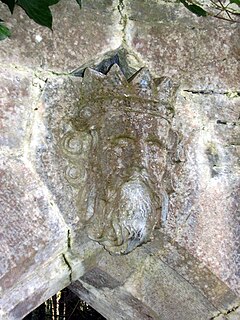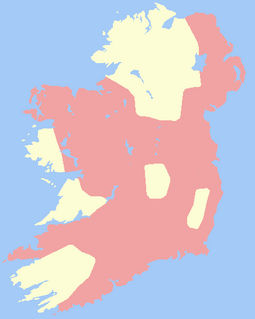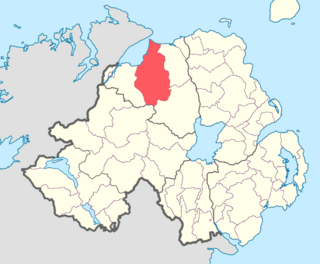| |||||
| Centuries: | |||||
|---|---|---|---|---|---|
| Decades: | |||||
| See also: | Other events of 1193 List of years in Ireland | ||||
Events from the year 1193 in Ireland.
| |||||
| Centuries: | |||||
|---|---|---|---|---|---|
| Decades: | |||||
| See also: | Other events of 1193 List of years in Ireland | ||||
Events from the year 1193 in Ireland.
Diarmait Mac Murchada, anglicised as Dermot MacMurrough, Dermod MacMurrough, or Dermot MacMorrogh, was a King of Leinster in Ireland. In 1167, he was deposed by the High King of Ireland, Ruaidrí Ua Conchobair. The grounds for the deposition were that Mac Murchada had, in 1152, abducted Derbforgaill, the wife of the king of Breifne, Tiernan O'Rourke. To recover his kingdom, Mac Murchada solicited help from King Henry II of England. His issue unresolved, he gained the military support of the 2nd Earl of Pembroke. At that time, Strongbow was in opposition to Henry II due to his support for Stephen, King of England against Henry's mother in the Anarchy. In exchange for his aid, Strongbow was promised in marriage to Mac Murchada's daughter Aoife with the right to succeed to the Kingship of Leinster. Henry II then mounted a larger second invasion in 1171 to ensure his control over Strongbow, resulting in the Norman Lordship of Ireland. Mac Murchada was later known as Diarmait na nGall. He was seen in Irish history as the king that invited the first-ever wave of English settlers, who were planted by the Norman conquest. The invasion had a great deal of impact on Irish Christianity, increasing the de facto ability of the Holy See to regulate Christianity in Ireland.

Ruaidrí mac Tairrdelbach Ua Conchobair was King of Connacht from 1156 to 1186, and High King of Ireland from 1166 to 1198. He was the last High King of Ireland. Anglo-Normans invaded Ireland. Ruaidrí was the last native and Gaelic King of Ireland.
Castleknock is an affluent suburb located 8 km (5 mi) west of the centre of Dublin city, Ireland. It is centred on a village in Fingal.

William de Burgh was the founder of the House of Burgh in Ireland and elder brother of Hubert de Burgh, 1st Earl of Kent and Geoffrey de Burgh, Bishop of Ely.
Toirdhealbhach Mór Ua Conchobhair anglicised Turlough Mór O'Conor, was King of Connacht (1106–1156) and High King of Ireland.

Muircheartach Ua Briain, son of Toirdelbach Ua Briain and great-grandson of Brian Boru, was King of Munster and later self-declared High King of Ireland.

The Anglo-Norman invasion of Ireland took place during the late 12th century, when Anglo-Normans gradually conquered and acquired large swathes of land from the Irish, over which the kings of England then claimed sovereignty, all allegedly sanctioned by the Papal bull Laudabiliter. At the time, Gaelic Ireland was made up of several kingdoms, with a High King claiming lordship over most of the other kings. The Norman invasion was a watershed in Ireland's history, marking the beginning of more than 800 years of direct English and, later, British, involvement in Ireland.

The Bruce campaign was a three-year military campaign in Ireland by Edward Bruce, brother of the Scottish king Robert the Bruce. It lasted from his landing at Larne in 1315 to his defeat and death in 1318 at the Battle of Faughart in County Louth. It was part of the First War of Scottish Independence and the conflict between the Irish, Scoto-Normans, and the Hiberno-Normans.
Events from the year 1347 in Ireland.
Events from the year 1101 in Ireland.
Events from the year 1177 in Ireland.
Events from the year 1186 in Ireland.
Events from the year 1204 in Ireland.

The Bishop of Ossory is an episcopal title which takes its name after the ancient of Kingdom of Ossory in the Province of Leinster, Ireland. In the Roman Catholic Church it remains a separate title, but in the Church of Ireland it has been united with other bishoprics.
Events from the year 1331 in Ireland.
The Archbishop of Dublin is the head of the Archdiocese of Dublin in the Catholic Church, responsible for its spiritual and administrative needs. The office has existed since 1152, in succession to a regular bishopric since 1028. The archdiocese is the metropolitan see of the ecclesiastical province of Dublin, and the archbishop is also styled the Primate of Ireland. The cathedral church of the archdiocese is Saint Mary's Pro-Cathedral in Dublin city, although the Church formally claims Christ Church as its cathedra, and the archbishop's residence is Archbishop's House in Drumcondra.
Domnall Mór Ua Briain, or Domnall Mór mac Toirrdelbaig Uí Briain, was King of Thomond in Ireland from 1168 to 1194 and a claimant to the title King of Munster. He was also styled King of Limerick, a title belonging to the O'Brien dynasty since Brian Boru's annexation of the Norse city in the 10th century.

Keenaght is a barony in the mid-northerly third of County Londonderry, Northern Ireland. It connects to the north-Londonderry coastline, and is bordered by four other baronies: Coleraine to the east; Loughinsholin to the south-east; Tirkeeran to the west; and Strabane Upper to the south-west. It was the territory of the Cianachta Glengiven from the 5th century until its takeover in the 12th century by the Ó Cathaín's. The largest settlement in the barony is the town of Limavady.
Events from the year 1216 in Ireland.
Events from the year 1167 in Ireland.